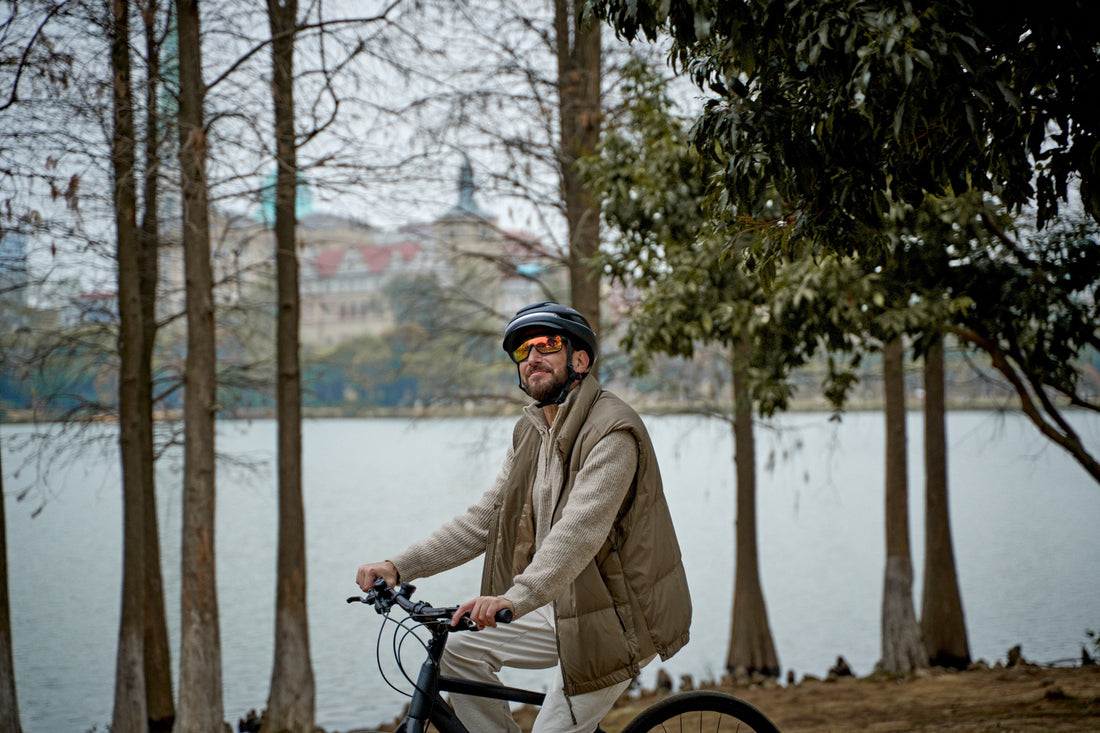
5 Essential Features Every Urban Commuter Helmet Should Have
Share
Published: March 3, 2025 | Reading Time: 5 min
Urban commuting by bicycle presents unique challenges that recreational or sport cycling doesn't. From navigating busy intersections to dealing with changing weather conditions and transitioning from bike to boardroom, city cyclists need gear that works as hard as they do.
While the market is flooded with helmet options, not all are created equal when it comes to daily urban use. After consulting with transportation safety experts, urban planning specialists, and everyday bike commuters, we've identified the five non-negotiable features that transform a basic helmet into an essential urban commuting tool.
1. Comprehensive Lighting System
Why it matters:
Being seen is just as important as seeing where you're going. Studies show that properly lit cyclists experience 47% fewer collisions, with the biggest gains coming from 360° visibility.
What to look for:
- Full perimeter coverage: Front, rear, AND side lighting
- Adaptive brightness: Automatically adjusts to ambient light conditions
- Fog light functionality: Cuts through low visibility conditions
- Battery life: Minimum 8 hours per charge for daily commuters
- Intuitive controls: Easily accessible without removing hands from handlebars
Many urban commuters make the mistake of focusing only on forward lighting, but intersection accidents—where side visibility is crucial—account for 67% of urban cycling incidents.
Red flag:
Beware of helmets with lighting systems that require separate charging or have limited battery life. Your lighting should last as long as your commute, with a healthy margin for unexpected delays.
2. All-Weather Functionality
Why it matters:
Urban commuters don't have the luxury of choosing when to ride. Rain, temperature fluctuations, and unexpected weather changes are part of the daily reality.
What to look for:
- IPX5 water resistance or better: Ensures functionality in heavy rain
- Wide temperature operating range: At least -10°C to 50°C for year-round commuting
- Anti-fog features: Prevents visor fogging in humid or cold conditions
- Quick-drying materials: For comfort after rain exposure
- UV protection: Shields both the rider and the helmet materials from sun damage
Red flag:
Avoid helmets with poor ventilation or those that become uncomfortable in rain. Many helmets perform well in ideal conditions but fail when the weather turns challenging—precisely when protection matters most.
3. Practical Comfort Features
Why it matters:
Discomfort is the number one cited reason for inconsistent helmet use. A helmet only provides protection when you actually wear it.
What to look for:
- Ponytail compatibility: Essential for long-haired riders
- Built-in bug net: Prevents insects from entering through vents
- Magnetic buckle system: For one-handed operation, even with gloves
- Adjustable fit system: Accommodates different head shapes and seasonal headwear
- Lightweight design: Under 450g to prevent neck fatigue
Red flag:
Be skeptical of comfort claims without specific features. "Comfortable fit" is meaningless without the adjustability and design elements that actually deliver on that promise for different head shapes and everyday conditions.
4. Smart Functionality Without App Dependency
Why it matters:
Smart features enhance safety and convenience, but requiring smartphone connectivity creates unnecessary failure points and distractions.
What to look for:
- Standalone operation: All essential functions work without phone connectivity
- Simple, intuitive controls: Minimal learning curve for daily use
- Status indicators: Clear visual feedback about current settings
- Battery alerts: Advance warning when charging is needed
- Automatic functions: Features that activate when needed without manual intervention
Red flag:
Avoid helmets that require app connectivity for basic functions. Your safety shouldn't depend on Bluetooth connectivity, software updates, or smartphone battery life.
5. Appropriate Certification For Your Riding Style
Why it matters:
Different riding styles create different impact scenarios. E-bike riders, in particular, need helmets certified for higher impact speeds.
What to look for:
- For traditional cycling: CPSC-ASTM F1447, CE-EN 1078
- For e-bikes up to 25 km/h: Same as traditional plus extra coverage
- For e-bikes up to 45 km/h: NTA-8776 certification (tests impacts at higher velocities)
- Multiple certifications: The best helmets meet multiple standards
- Certification date: Standards evolve; newer certifications incorporate the latest safety research
Red flag:
Be wary of helmets that don't clearly state their certifications or that use vague language about safety standards. Legitimate manufacturers proudly display their certification credentials.
Beyond The Essentials: Nice-To-Have Features
While the five features above form the foundation of a quality urban commuter helmet, several additional features can further enhance your daily riding experience:
- Integrated camera mounts: For ride documentation or incident recording
- Reflective elements: Passive visibility when lights aren't active
- Removable visors: For different weather conditions
- Antimicrobial padding: Prevents odor buildup from daily use
- Crash detection: Alerts emergency contacts if an accident occurs
Making The Right Choice
When evaluating helmets, consider your specific commuting patterns:
- Distance: Longer commutes benefit more from lightweight designs and extended battery life
- Traffic density: Busier routes demand better visibility features
- Climate: Local weather patterns should influence waterproofing and ventilation priorities
- Storage situation: Limited storage space at work might prioritize compact designs
The perfect commuter helmet strikes a balance between protection, functionality, and convenience. By insisting on these five essential features, you'll filter out options that might look appealing but would fail to meet the real-world demands of daily urban cycling.
Remember: The best helmet isn't necessarily the most expensive or feature-laden—it's the one that addresses your specific needs so effectively that you never think twice about wearing it.
Looking for a helmet that checks all five essential boxes? Discover the JARSH Commute, designed specifically for the demands of daily urban cycling.
